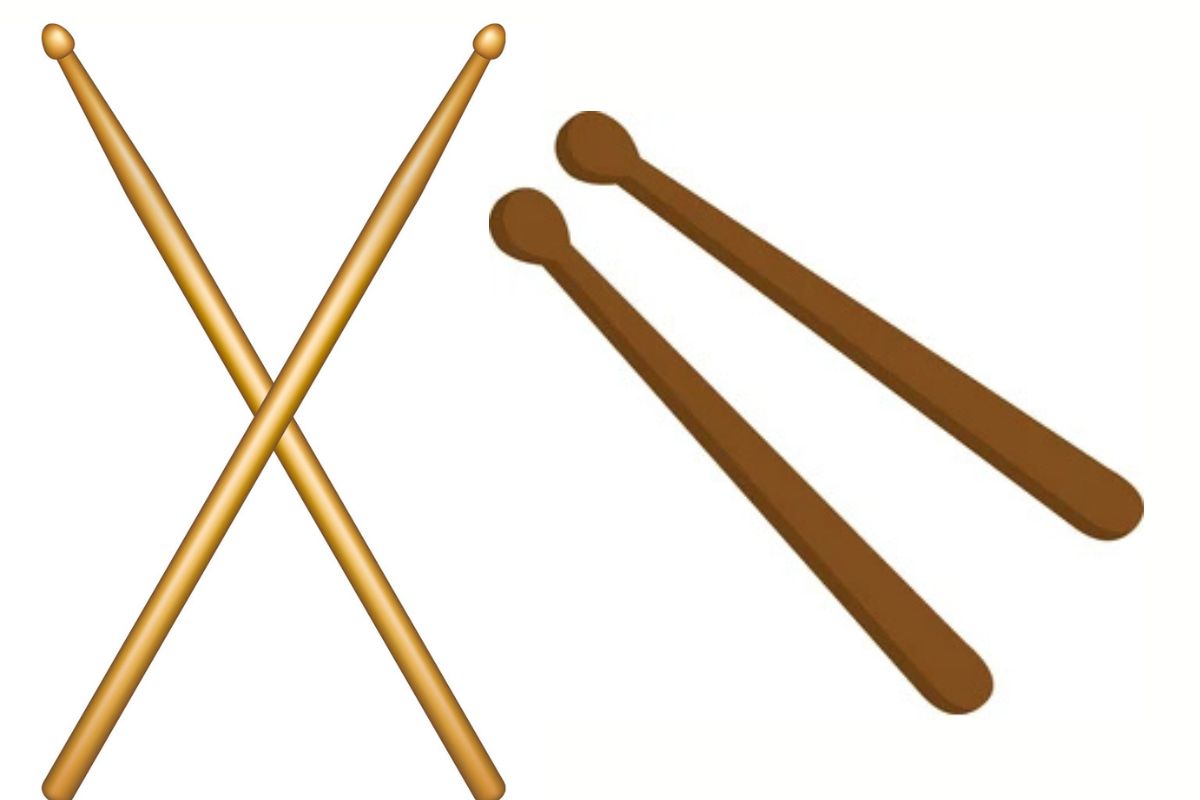Music is a realm of endless exploration; sometimes, the most fascinating elements can be found in the most unexpected places. Among the vast array of instruments, composers, and musical innovations, a surprising wealth of captivating concepts begins with the letter “X.” Top 10 music things that start with X, each contributing uniquely to sound.
‘X’ in the World of Music
The letter “X” is not the most common in the musical lexicon but is home to some truly intriguing instruments, genres, and figures. From traditional African string instruments to avant-garde composers, the letter “X” signifies both the ancient and the modern, the traditional and the experimental. As we delve into these musical elements, we’ll uncover diverse sounds, histories, and innovations.
Importance of Unique Instruments and Terms
Instruments and musical concepts that begin with “X” often represent niche areas of the music world. However, their unique qualities often play a vital role in preserving cultural heritage or pushing the boundaries of musical composition. These elements remind us that the world of music is vast and ever-evolving, with hidden gems awaiting discovery.
10 Best Music Things That Start with X
Xylophone
Origins and History of the Xylophone
The xylophone is one of the most recognizable percussion instruments, dating back to ancient times. While the modern orchestral xylophone, as we know it, originated in Africa and Asia, similar instruments made of wood or metal bars can be traced back over 1,000 years. The name “xylophone” itself is derived from the Greek words “xylan,” meaning wood, and “phone,” meaning sound, literally translating to “wood sound.”
Role in Classical and Contemporary Music
In classical music, the xylophone is a staple of orchestral compositions, often used for its bright, percussive tone that can cut through dense textures. In contemporary music, its versatility allows it to appear in genres ranging from jazz to popular music. Its sharp timbre brings rhythmic and melodic elements to life in a way few instruments can replicate.
Famous Xylophonists and Performances
Some of the most notable xylophonists include Evelyn Glennie, the Scottish percussionist who has brought the xylophone to international prominence, and George Hamilton Green, a 20th-century American xylophone virtuoso. Memorable performances often showcase the instrument’s ability to produce rapid, intricate rhythms that captivate audiences.
Xalam
The Cultural Significance of Xalam
The xalam is a traditional stringed instrument from West Africa, particularly associated with the griots, or storytellers, of Senegal and Mali. Resembling a lute, the xalam has been a central part of African musical traditions for centuries, often used to accompany storytelling and historical songs that recount the past.
How Xalam Shaped African Music Traditions
The xalam has significantly influenced African music, particularly in regions where it is still actively played. Its unique tuning and plucking technique create a distinct rhythmic yet melodic sound, shaping the development of modern African genres such as Mbalax. The instrument’s role in ceremonial and everyday contexts illustrates its importance to African cultural identity.
Modern Uses and Artists Reviving the Xalam
In recent years, there has been a resurgence in interest in traditional African instruments, including the xalam. Modern artists like Cheikh Lô have helped to revive the xalam’s presence in contemporary African music, blending traditional sounds with modern genres to keep its legacy alive.
Xun
Historical Background of the Xun
The xun is one of China’s oldest wind instruments, dating back over 7,000 years. Made from clay or stone, the xun resembles a small ocarina and produces a deep, resonant sound. Historically, the xun was used in both ritual and court music during the Zhou and Han dynasties, its hollow, earthy tone symbolizing a connection to nature and the heavens.
Xun’s Role in Traditional Chinese Music
The xun is special in traditional Chinese music, particularly Confucian ceremonial music. Its sombre tone contrasts sharply with the brighter timbres of other traditional Chinese instruments like the pipa or guzheng, lending ensembles a grounded, reflective quality. The xun was often used in solemn ceremonies and was believed to communicate with the divine.
Preservation and Contemporary Use of Xun
Though its use declined over centuries, the Xun has seen a revival in modern Chinese music. To maintain the Xun’s sound in current culture, musicians and academics are attempting to conserve and revitalize this antiquated instrument by incorporating it into new compositions and educational initiatives.
Xenakis
Iannis Xenakis’ Contributions to Experimental Music
Iannis Xenakis was a revolutionary composer who merged music with mathematics, architecture, and philosophy. His compositions broke traditional tonal and structural boundaries, creating complex, highly experimental pieces that challenged both performers and audiences alike.
Major Works and Influence on Modern Composition
Xenakis’ most famous works include “Metastasis” and “Pithoprakta,” which were groundbreaking for using stochastic processes and mathematical structures. His influence extends beyond the avant-garde, impacting modern electronic music, minimalism, and multimedia art installations. Xenakis redefined the possibilities of sound as a medium for mathematical and architectural exploration.
Xaphoon
Development of the Xaphoon as a Unique Wind Instrument
The Xaphoon, also known as the “pocket sax,” was invented in the 1970s by Brian Wittman. This instrument combines the saxophone and the clarinet elements, producing a sound reminiscent of a reed instrument but in a compact, portable form. The Xaphoon’s small size and rich sound have made it a favourite among travelling musicians.
Versatility in Various Music Genres
Despite its size, the Xaphoon has proven to be incredibly versatile. It is used in jazz, folk, and even classical music settings. Its deep, reedy sound allows musicians to create rich, textured tones while maintaining a compact, easy-to-carry instrument.
How to Play the Xaphoon: Key Techniques
Similar to playing the clarinet, playing the Xaphoon requires mastering reed control and breath support. Musicians can produce a wide range of notes by manipulating their embouchure and using finger holes, allowing for expressive and dynamic performances.
Xingu Music
Exploring the Indigenous Xingu Tribes’ Musical Heritage
The Xingu tribes of Brazil have a rich musical tradition that reflects their connection to nature and community. Music in Xingu culture is more than entertainment; it serves as a spiritual, social, and cultural bond, often accompanying rituals and ceremonies passed down for generations.
Traditional Instruments and Song Styles
Xingu music features a range of indigenous instruments, such as flutes, rattles, and drums, each playing a role in ceremonial life. Vocal chanting, accompanied by rhythmic percussion, is a hallmark of their music, reflecting the cyclical patterns of nature and life in the Amazon rainforest.
The Influence of Xingu Music on World Music
As ethnomusicologists and world music enthusiasts have become more interested in indigenous cultures, Xingu music has started influencing global artists. Elements of their rhythms and vocal styles can be found in world fusion music, introducing a wider audience to these ancient traditions.
Xenomania
Introduction to Xenomania and Their Pop Music Influence
Xenomania is one of the most successful British music production teams, known for their ability to craft catchy, chart-topping hits. Founded by Brian Higgins, Xenomania has worked with some of the biggest names in pop music, creating a signature sound characterized by infectious melodies and innovative production techniques.
Notable Hits Produced by Xenomania
Xenomania has produced hits for artists like Girls Aloud, Sugababes, and Kylie Minogue, helping shape British pop’s sound in the early 2000s. Their unique approach to songwriting and production, blending electronic elements with classic pop structures, has resulted in numerous chart-topping singles.
Impact on the Modern Music Industry
Xenomania’s influence on modern pop music cannot be overstated. Their innovative production techniques have set a new standard for pop music, inspiring countless producers and artists. The success of their collaborations helped redefine the sound of mainstream pop, blending genres in unexpected and exciting ways.
X-Factor
A Look at the History of the X-Factor Franchise
The X-Factor is a global television phenomenon that has discovered and launched the careers of numerous music stars. Since its debut in 2004, the show has become a cultural staple, showcasing talented singers and musicians worldwide and giving them a platform to shine.
Famous Musicians Discovered Through the Show
Some of the most famous artists to emerge from the X-Factor include Leona Lewis, One Direction, and Little Mix, all of whom have gone on to have wildly successful careers. The show’s format of combining talent competition with audience engagement has proven to be a winning formula for discovering new talent.
How X-Factor Shaped Pop Culture and Music
The X-Factor has profoundly impacted pop culture, not only by discovering new talent but also by shaping trends in music, fashion, and entertainment. Its global reach has influenced how we consume music, making it an essential part of the modern music industry.
Xenharmonic Music
What Is Xenharmonic Music?
Xenharmonic music refers to compositions that use tuning systems outside of the traditional Western 12-tone equal temperament. Musicians who explore xenharmonic music experiment with microtones, alternative scales, and non-standard intervals to create sounds that challenge conventional notions of harmony and melody.
Musicians Pioneering Xenharmonic Compositions
Composers like Harry Partch and La Monte Young are pioneers of xenharmonic music, using alternative tuning systems to create pieces that defy traditional Western harmonic rules. These experimental approaches to tuning have expanded the possibilities for composition, offering new ways of structuring and experiencing sound.
Impact on Modern Music Theory and Experimentation
Xenharmonic music has significantly impacted modern music theory, particularly in experimental and avant-garde circles. It has inspired musicians to question traditional tuning systems’ limitations and explore the rich possibilities of sound beyond the familiar 12 tones.
Conclusion
The world of music is vast, and seemingly obscure elements like those starting with “X” contribute richly to its diversity. From ancient instruments like the Xun to modern phenomena like the X-Factor, the letter “X” represents a surprising variety of musical traditions, innovations, and figures. By exploring these unique elements, we celebrate the diversity of sound and how music continues to evolve and inspire across cultures and centuries.
Frequently Asked Questions (FAQs)
What is the most popular instrument starting with ‘X’?
The xylophone is arguably the most popular instrument, beginning with the letter “X.” Its distinct percussive sound is widely used in classical and contemporary music settings.
How has the xylophone influenced modern music?
The xylophone’s versatility has allowed it to thrive in various music genres, from orchestral works to jazz. Its bright, resonant sound continues to influence composers and musicians seeking unique textures in their music.
What defines Xenharmonic music?
Xenharmonic music refers to compositions that use alternative tuning systems beyond the conventional Western 12-tone scale, offering new harmonic possibilities and sonic textures.
Are Xingu music traditions still practised today?
Yes, Xingu music traditions continue to be practised by Indigenous tribes in Brazil, often in ceremonial contexts. There is also a growing interest in preserving and sharing these musical traditions with the broader world.
Who are the famous artists produced by Xenomania?
Xenomania has produced hits for artists like Girls Aloud, Sugababes, and Kylie Minogue, significantly shaping the sound of early 2000s British pop music.





















